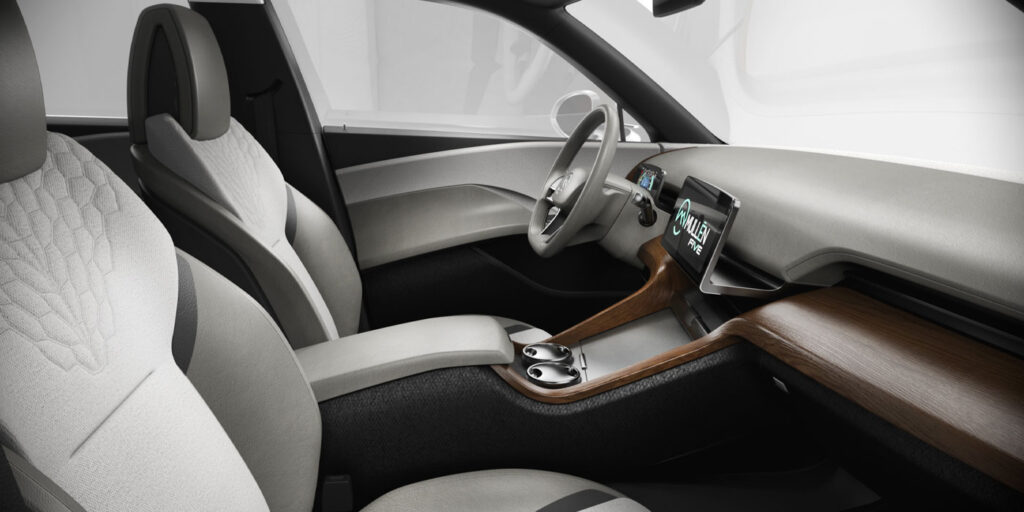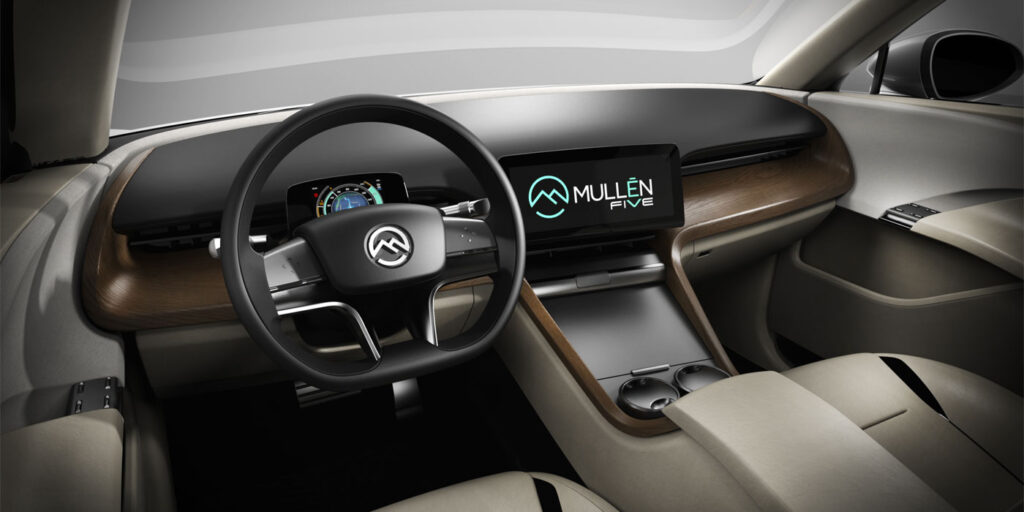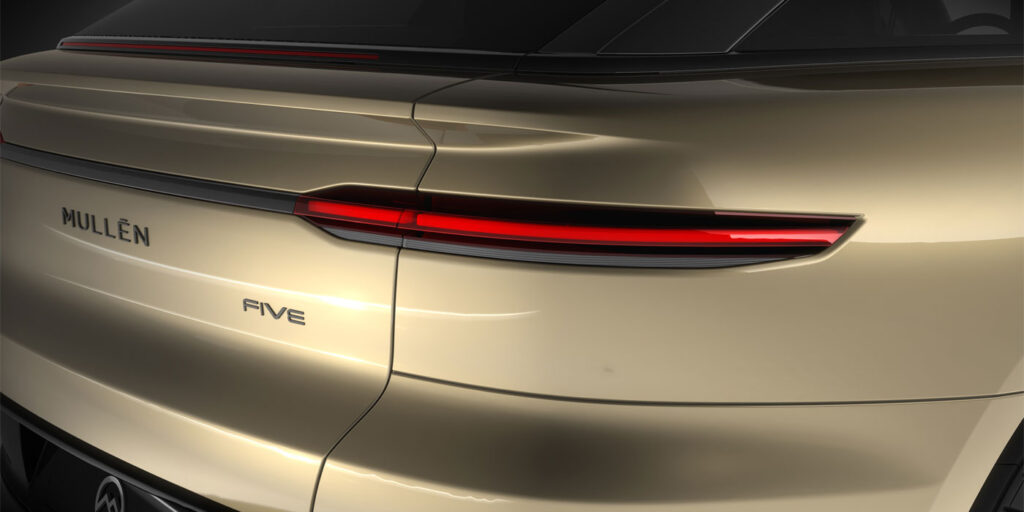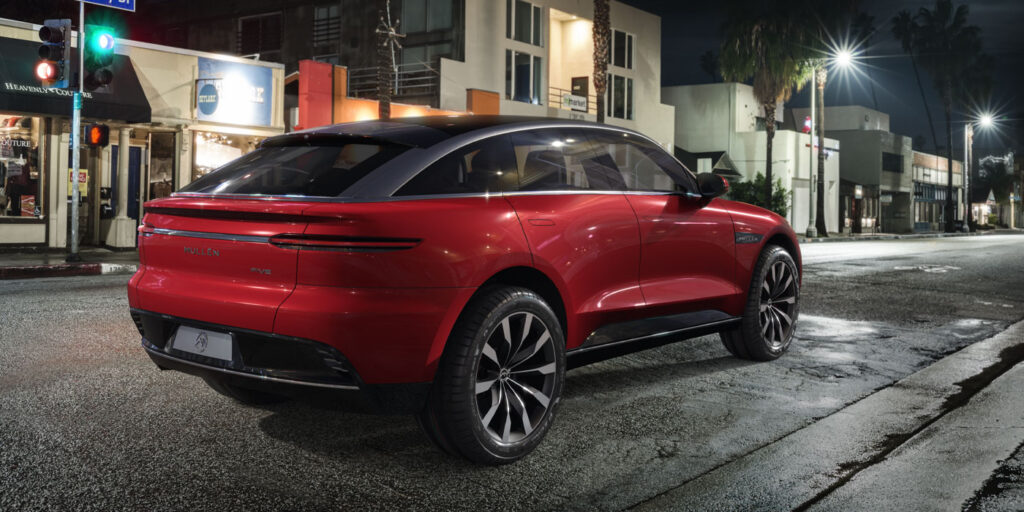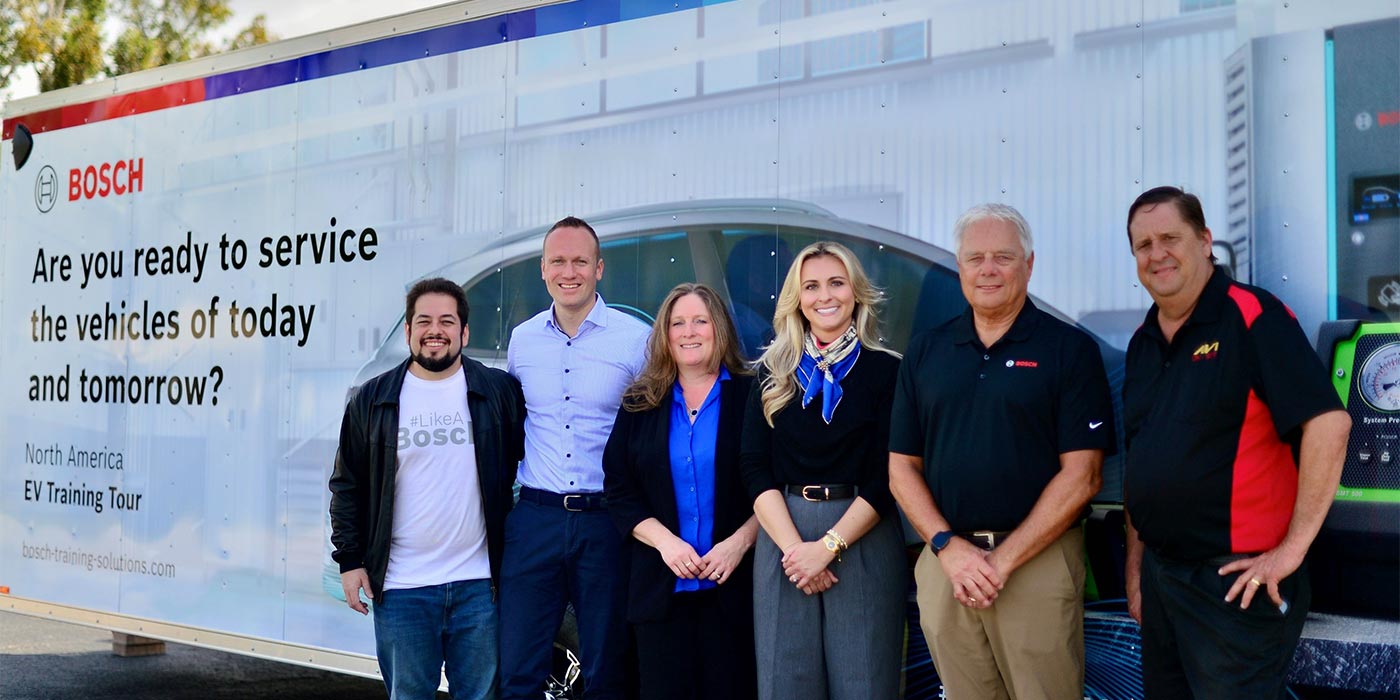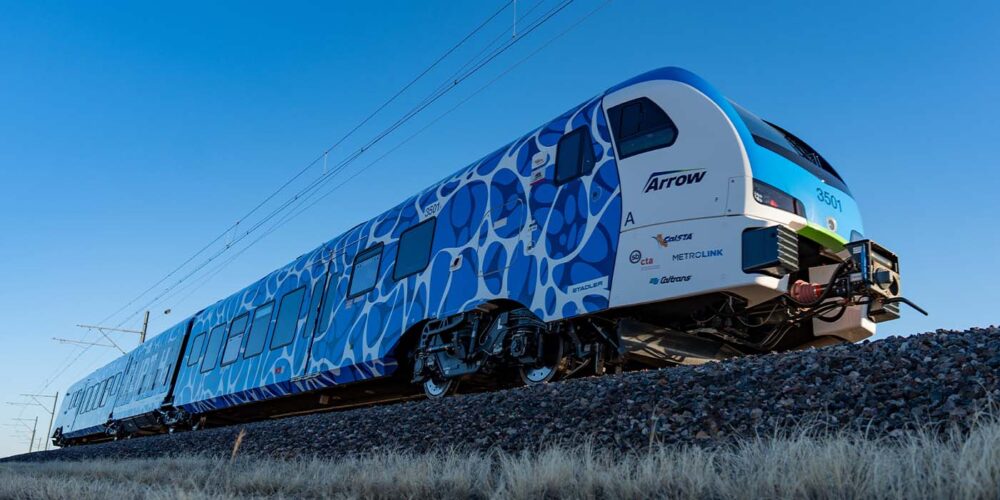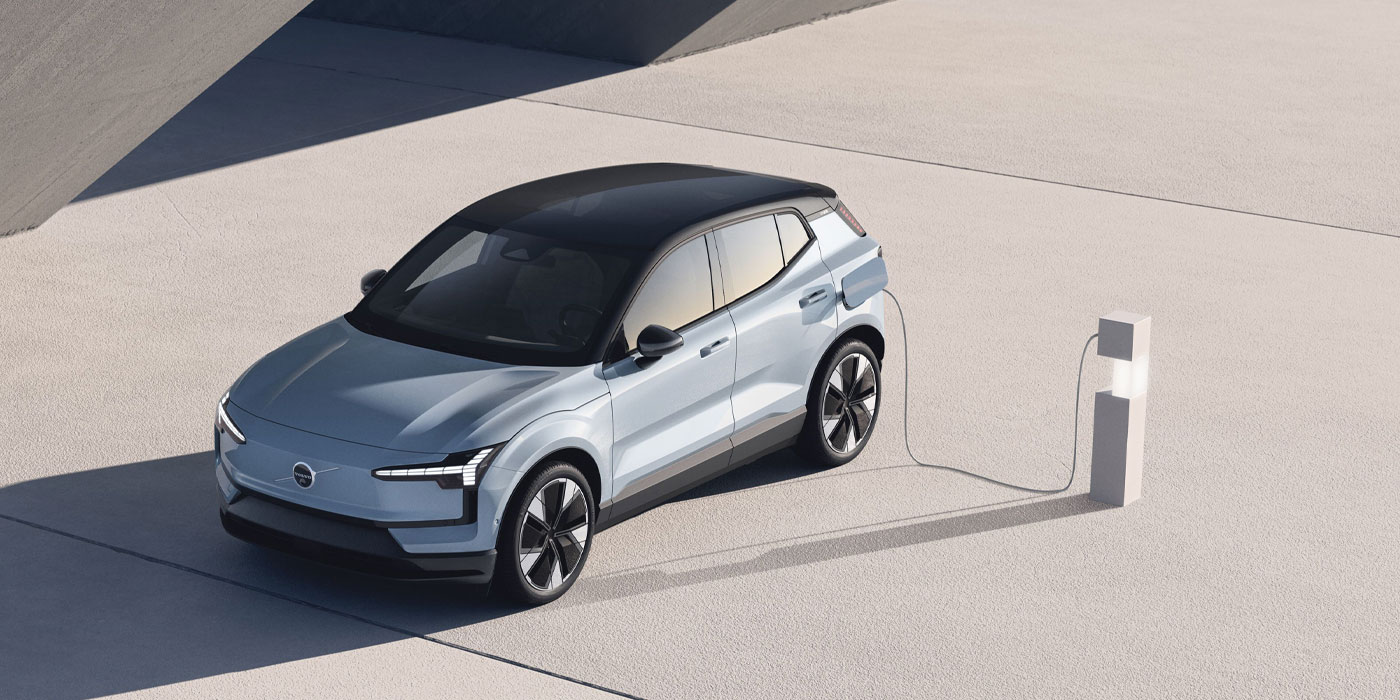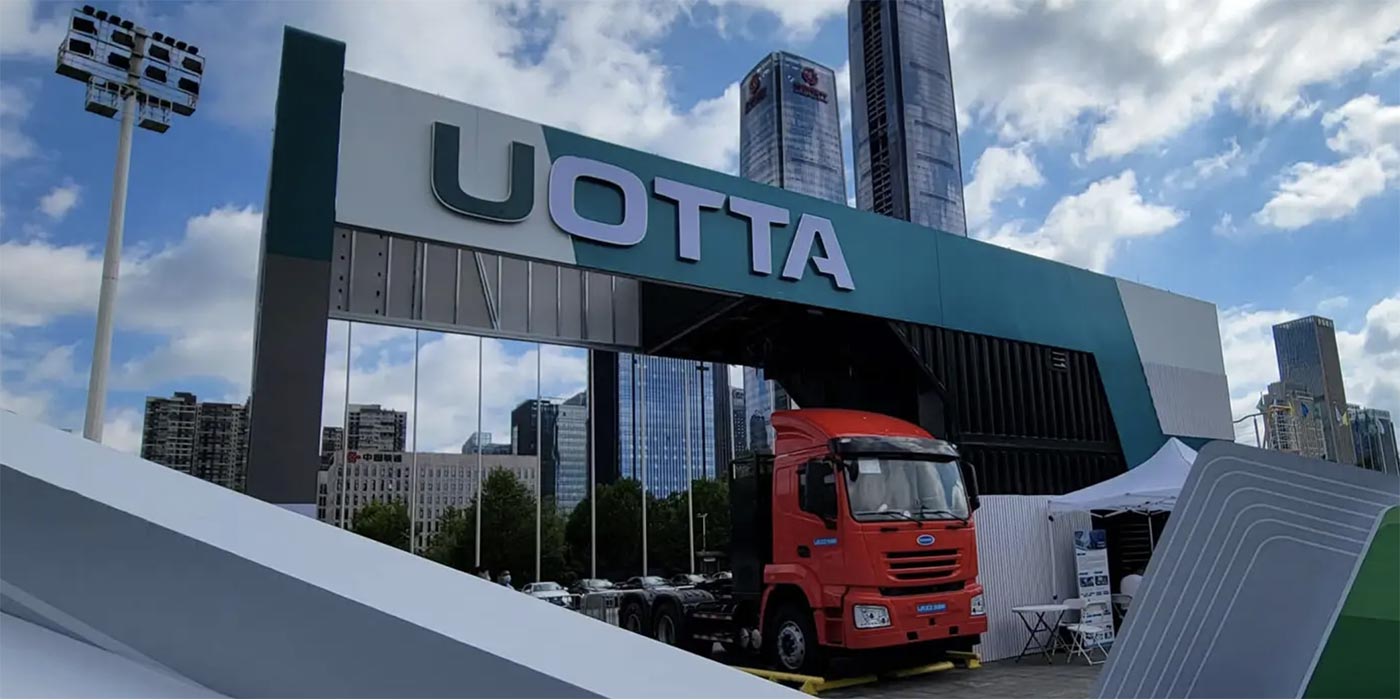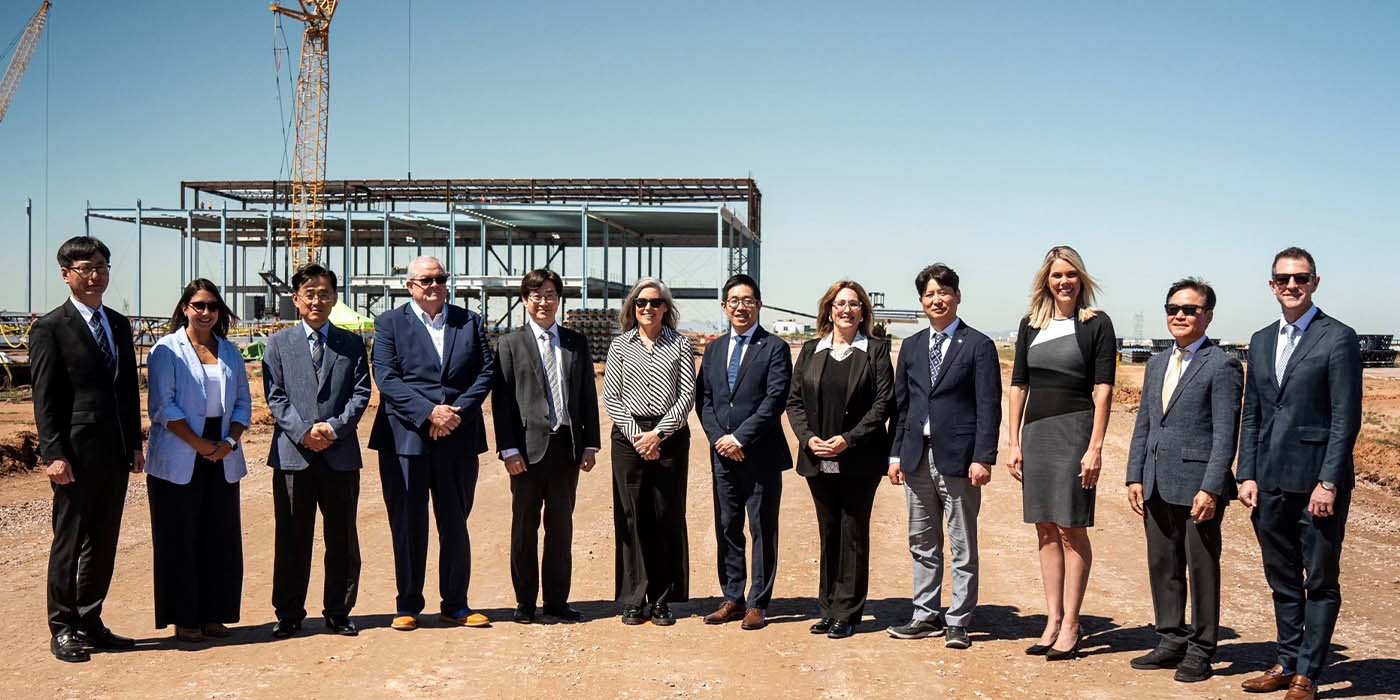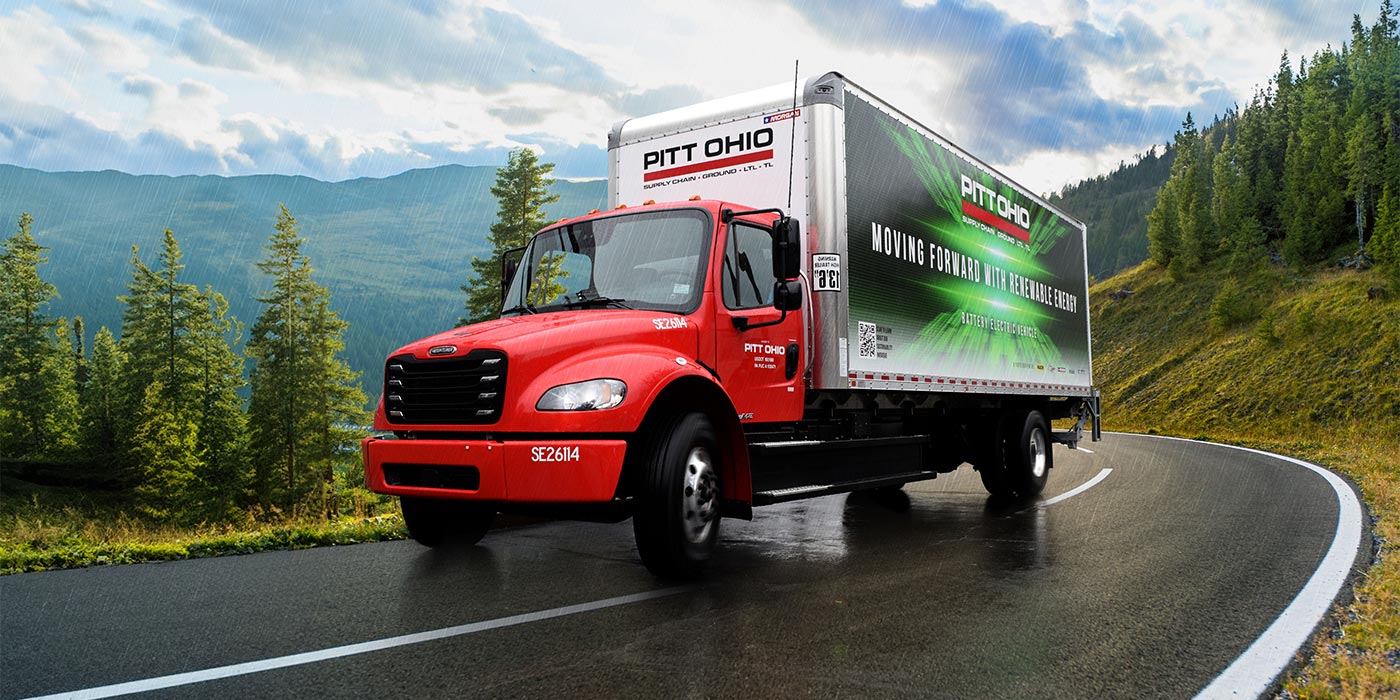After Mullen debuted the Mullen FIVE EV crossover at the 2021 LA Auto Show last year, The Buzz started hearing a … well, a buzz about it. Since November, that buzz has steadily evolved into something more like a chanting for more from a growing fanbase. Maybe demand stems from the vehicle’s 325-mile range, or its starting price under $50k after a federal rebate. Maybe it has something to do with its seemingly other-worldly Persona infotainment/security technology. It’s an intriguing package, to say the least.
To find out more, we gathered up a roundtable of the company’s leadership to tell us more about Mullen, detail the features of the FIVE EV crossover, and tell us what other discoveries are on the horizon. Read on to hear from David Michery, Mullen CEO and chairman; Jason Putnam, Mullen VP of marketing; and Marian Petrelecan, Mullen VP of vehicle engineering.
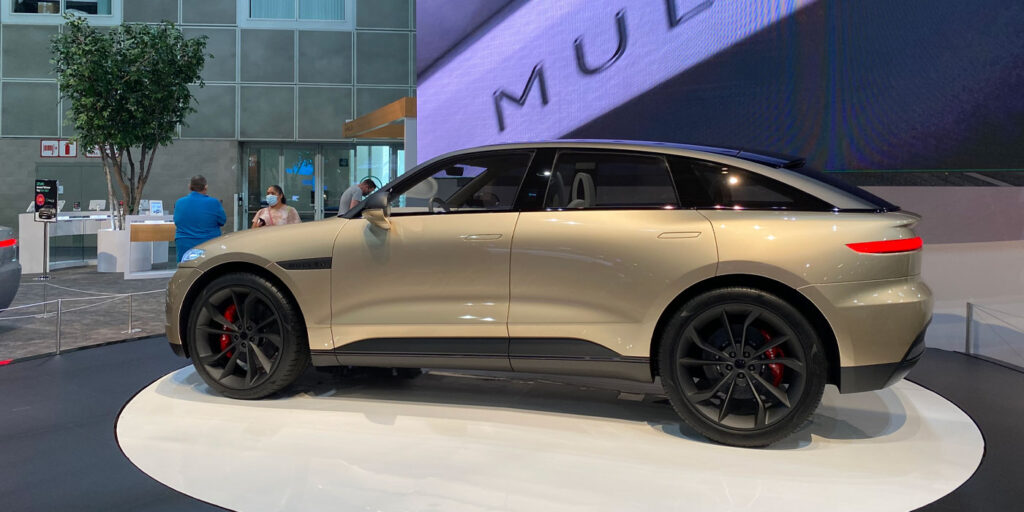
So, how has feedback been since the LA Auto Show?
Jason Putnam: We had a great debut. That was the first time we debuted the vehicle to the world. That was a great event. Actually, it’s funny, I just got something back about a week ago from the LA Auto Show where they had done some post-consumer research on the show with Forrester. And, actually, they came back and let me know that we were one of the top five vehicles that were recalled from the event. So, yeah, we had a really great debut on it. And since then we’ve had really, really strong interest. Lots of different interactions by media and press, but then the consumer interest as well. All the different metrics that we look at for website traffic, online awareness, everything is really taking off.
What would you say makes this company distinctly different from some of those other EV behemoths out there? How would you describe Mullen differently?
Jason Putnam: Well, I think the one area that we really focus on and understand is we have been around since 2014. One of the first companies David bought [was] Coda. And if you go back to 2009, 2010, there were only three production EVs in the market. There was the Nissan Leaf, there was the Tesla Roadster, and then there was the Coda. Coda sold a couple of thousand vehicles in the market and then went out of business. But what happened there was David bought that company out of bankruptcy and we held that manufacturing license.
So, if you compare who we are and what we’ve done, we are an OEM. And that’s something that I think if you look at some of the other newcomers to the space, they’re going to have to fill those shoes at some point, and we already have.
The other thing I like the point to is our manufacturing presence. We have that manufacturing presence now in Tunica, Mississippi. So, we’re not going to contract a manufacturer. This is something that we purchased back in November. It’s a 127,000 sq.-ft. facility that was built for an EV manufacturer, that’s 50 miles south of Memphis, Tennessee, that sits on 100 acres.
David Michery: I believe that Mullen FIVE, to me, and to this company, is what the Model S was to Tesla. The key factor – and people don’t focus on this key factor – is not about the car being electric. It’s about the car being sexy, having amazing performance, and then it’s electric. So when Elon came to the market, and I can attest to this, because I purchased Coda out of bankruptcy, Tesla said, “We’re going to make a really nice generational type vehicle. And by the way, it happens to be electric.” So I think that’s how that Model S really took shape and then eventually became generational. I think we went in there with the idea that we were going to make a sexy, very sporty, very high-performance-driven product. And then, by the way, it’s electric, and deliver that to the consumer from an electric company, not an ICE company. Guys that built gas vehicles are going to have a problem competing with guys that have only built electric vehicles.
So you look historically at who’s been there and who’s been focused on building electric vehicles. We know Tesla’s been there from day one. We’ve been there for, let’s call it a decade. But I’d like to say that the experiences that we’ve garnered through the Coda product line, that’s the experience that money can’t buy. When we tried to re-reintroduce that vehicle in November of 2014 at the LA Auto Show, everyone thought, “Hey, look at these guys trying to put lipstick on a pig.” But what was really important wasn’t the fact that we were trying to reintroduce something that couldn’t compete with the Model S at that time; it was the billion dollars of technology that Coda invested into what made that car move, the battery management systems, the drivetrains, all of the items that were critical to making that vehicle move.
I think that gives us a competitive edge over everyone else. But more than anything else, we are able to build a sexy, very, very performance-based vehicle at an affordable price, and do it 100% here in America. That’s where we think we created the generational vehicle.
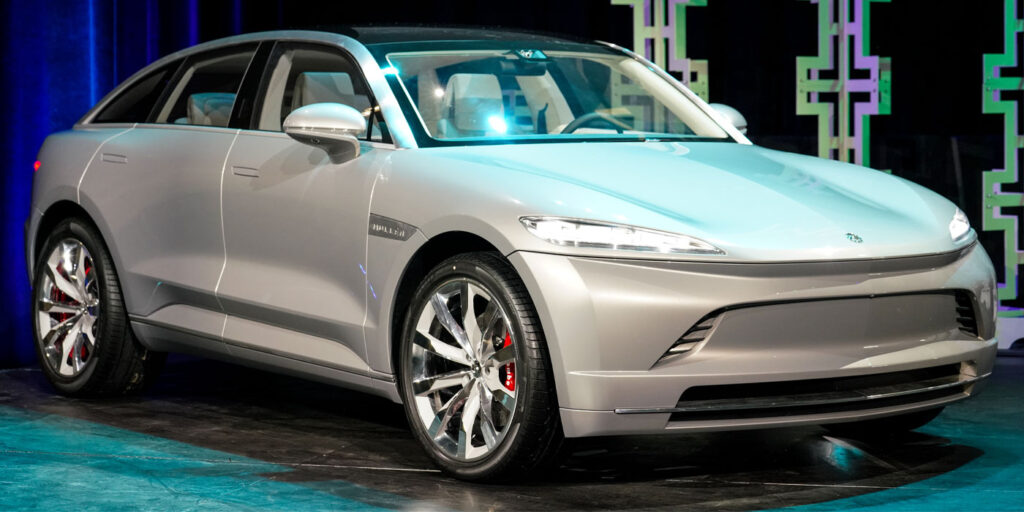
Going into some of the specs of the vehicle – obviously, 325 miles on a single charge is pretty impressive for a crossover. How were you able to achieve that kind of mileage while keeping the aesthetics, the style of the vehicle, how you wanted it?
Marian Petrelecan: It’s very simple: 120 kWh battery. So, we’re using our partner, Hofer, in Germany, which has very efficient electrical motors. Rear-wheel drive has a dual motor in the back with 300 kW power and 500 Newton meter torque. The version that’s four-wheel drive has another additional 150 kW in the front for 1,000 Newton meter torque. Now, of course, to achieve the range you go with less motorization, so rear-wheel drive with a larger battery helps with that – in this case, 120 kWh – and we also have the option for 90 kWh.
The next thing is the aerodynamic coefficient. We didn’t calculate it yet, but we think we are up there with the best. The ground clearance of 250-millimeters increases the aerodynamic coefficiency. We also will have a special compound in the tires, and so on. But we can even be above 320 miles. If we drive very carefully, let’s say with cruise control at 70 mph, we calculated it to go about 350 miles, but we are not going to publish that. We go conservative.
I understand that you’ve done a lot of R&D on your side regarding battery technology. You have talked a lot about your solid-state polymer battery pack. Can you tell me about that?
David Michery: We’re in the process of filing patents in the U.S. right now for that solid-state polymer battery technology. So we’re going to be as vague as possible, but I can give you information that has been already publicly disclosed. And with some of the results and findings, it’s a tremendous opportunity to change the landscape of the battery field with technology that reduces costs, reduces dangerous materials used to produce the cell as well as increase the efficiency by twofold. And degradation – let me give you an example. On your typical metal-based cells currently that are in production and utilized by Tesla and all the other manufacturing, degradation on 10,000 cycles is like 80%. Degradation on our cell after 10,000 cycles is 2%. So it’s a flat line across. Meaning no degradation at all. 2%. That’s basically nothing.
And what’s nice about our cell is we rated the cell prior to testing at 300 amp hours, and it tested at 343 amp hours at 4.3 volts. Now to the unique characteristics of the cell: You could literally take a torch and burn a hole right through it, and nothing will happen. You take a typical lithium cell and you put a torch to it, the thing’s going to explode like a bomb. You could take our cell and submerge it in saltwater, nothing will happen. You could take it out and reuse it. You submerge a lithium cell in saltwater, watch what happens. You’re going to have one hell of a fire that you can’t put out.
When it comes time to dispose of our cell, there are no dangerous materials or metals in it. It’s not classified as dangerous goods. And, it’s one-half the cost and twice the density. So, we can go on 150 kWh equivalent. We can go call it 600 miles on a charge with our 4,000 lb. SUV.
Do you see that particular type of battery being involved in some of your vehicles? How soon, I suppose, do you think that sort of battery could be implemented?
Jason Putnam: We see a solid-state polymer solution and the second generation Mullen FIVE. Marian, when do you project the second generation Mullen FIVE?
Marian Petrelecan: We hope to bring a refreshment in 2025 or ’26. A completely new development would be a couple of years later. But referring to the electronic second generation should be in a year, year-and-a-half.
David Michery: So, basically around the corner. Companies like Volkswagen were proud to announce that they are going to have a viable, solid-state polymer solution in 10 years. And that was announced a few years ago. So, we’re still way ahead of the curve.
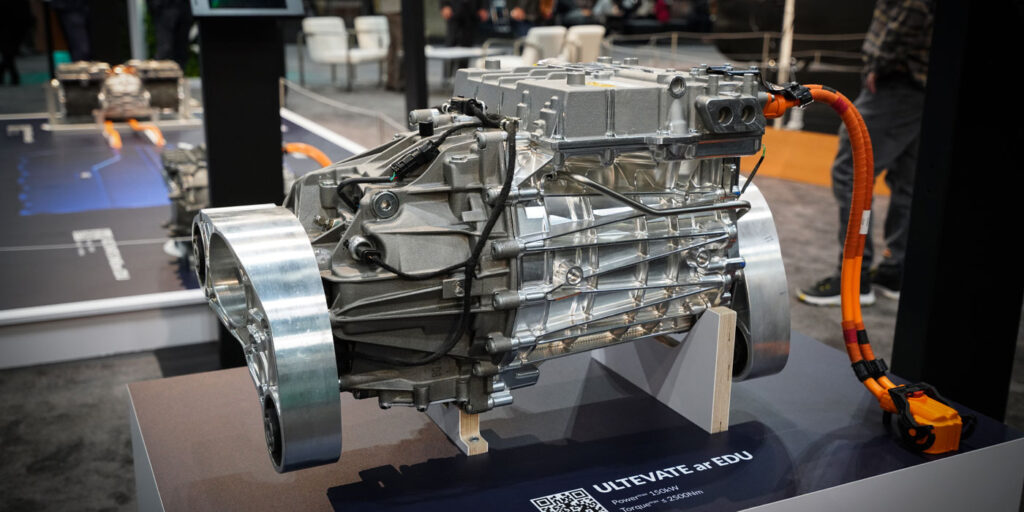
You had mentioned before that the second iteration of the FIVE is probably coming around 2025, 2026. When will the first iteration be hitting the streets?
Marian Petrelecan: We are shooting for ’24, ’25, probably more like the spring of ’25. The second iteration, again, is more electric and electronics. So the exterior, the body structure and so on, the mechanical parts will be the same. So the 2.0, in terms of electric power, will be a year-and-a-half later.
Let’s talk tech features of the Mullen FIVE. Is there anything that you think consumers will be particularly attracted to in this vehicle?
Jason Putnam: We have a really unique feature that we’re really putting a lot of investment into, and it’s really going to be the technology brand on the vehicle. Persona is a system that’s going to start on the outside of the vehicle with facial recognition. We have a camera monitor system built into the B pillar of the vehicle on both the driver’s side and the passenger’s side. Starting at roughly 8-10 feet, the vehicle will wake up and it’ll start the recognition, so once you get to the vehicle, the car will be unlocked. Your infotainment will be set. The climate control will be set. Your seating will be set. Your lighting will be set. Your navigation will be set. Everything will be personalized to the driver and ready to go.
We’re also going to enable gesture recognition. So, we have an eight-camera system built around the vehicle. Two of them are built into the Persona B pillar, and then we’ve got a few more around the car. What we’re going to be able to do is recognize maybe somebody that has ill intent, or maybe creeping around the car, looking at it a bit too long, lurking. What we’re going to be able to do in those scenarios is flash a message on the external monitor system to let those people know that the vehicle has been alarmed and activated. We can also do that with the infotainment in the car. The idea there is to push them down the road, get them away from the vehicle and on to something else.
Another feature is a pet safety mode. As you know, EVs don’t have any engine hum. There’s no noise that’s being emitted from the vehicle when they’re on. So, in that case, if you are out running errands on a Saturday and you want to take your dog with you, you can leave the animal in the vehicle at a nice, comfortable temperature, and we can notify that as well on the outside of the vehicle, that Chewy the Dog is in the vehicle at a comfortable 66 degrees, and there’s nothing worry about.
Persona will be the heart of the infotainment, and that will be the main brand around the vehicle technology package. So there’s a few other things that we have planned for Persona, as well. While we’re charging the vehicle we’ll also be able to show, on the external system, the level of charge and what it’s charging at. And if it’s at a public charger, for instance, this is a nice way [to show] that the vehicle’s approaching its full charge. We can let the monitor system know or let maybe somebody else who’s maybe waiting to have their vehicle charge behind us know. We can throw up a message and say, “Hey, the owner’s been notified. The vehicle’s approaching charge.”
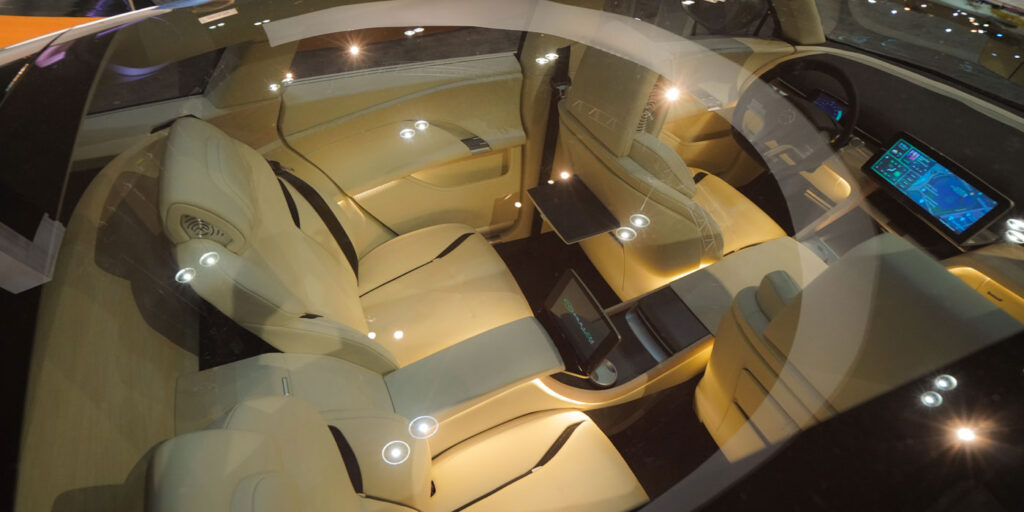
Everything regarding Persona, is that proprietary technology to your company, or are you involved in any kind of technology partnership?
Jason Putnam: It’ll be both. We’ve applied for internal patents on it, so the baseline technology will be patented and owned by Mullen, but, as you normally would, we looked outside at different partners and we do have some really good partners that are on this that have developed camera and monitor technology for some of the biggest OEMs out there. So, some of it is going to start, and it has started, with third-party relationships. And then, some of it will be moving into internal R&D as well.
Is there anything else Mullen is working on that you might say is on the same caliber of maybe the solid-state polymer battery that we talked about? Anything even that you can speak about vaguely, that you’re excited about developing down the road here?
Marian Petrelecan: In terms of structure, we intend to connect with a lot of steel manufacturers and use the next generation steels, or the so-called “nano steels,” with ultra-high-strength steel and long elongation. The intent is to have a multi-material or mixed-material body, and because of the long elongation and the high strengths, we can be lightweight, almost at the level of aluminum. Aluminum is three times less dense than steel. There is a proven formula that says for every 100 kg of body weight, an electric vehicle can save 6-8 miles.
